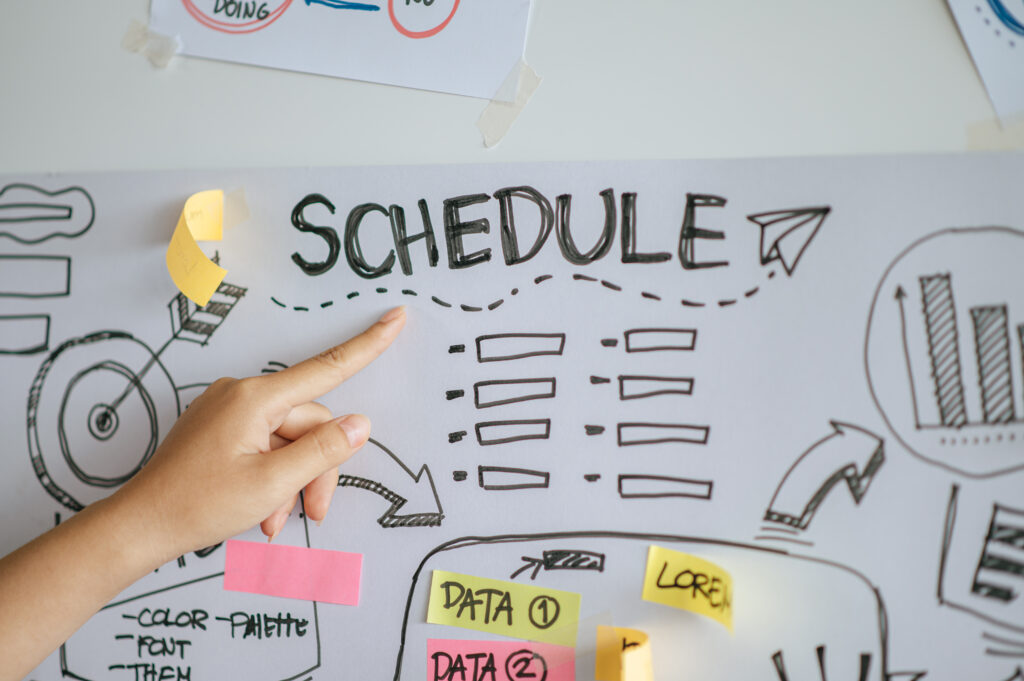For many people, the back-to-school season comes with a burst of fresh starts: new routines, earlier mornings, and organised schedules. But if you live with ongoing pain, this transition can feel less like a clean slate and more like a juggling act with too many balls in the air.
The shift from long summer days to a packed September calendar is real. For those dealing with chronic pain, it can be especially challenging. Managing pain and back-to-school demands requires more than just grit. It calls for smart planning, compassionate boundaries, and strategies that protect your energy while still letting you enjoy the season.
The good news is that you can rebuild structure without burning out. You can create a rhythm that supports your body, your energy, and your responsibilities. The key is to approach the season with awareness, intention, and flexibility.

The Double Load: New Demands Meet Chronic Pain
When the school year starts, the pace of life accelerates. There are earlier alarms, time-sensitive morning routines, school drop-offs, after-school activities, homework help, and social obligations. These changes demand more from you mentally, physically, and emotionally.
If you are living with pain, these increased demands can take a heavier toll. Pain and back-to-school transitions often collide in a way that disrupts your pain management habits. You might skip stretching because mornings are rushed. Rest breaks may disappear between errands. Your meals might become more processed and less nutritious because you are grabbing whatever is quick.
Pain and fatigue often feed each other. More stress and less self-care can lead to more pain, which in turn makes daily tasks harder. This is why breaking that cycle requires a deliberate approach to how you structure your days.

Reclaiming Structure That Works for You
When routines change, it is easy to let your pain management strategies slip. The key is not to copy the schedule you had in summer or to push yourself into an unsustainable September pace. Instead, rebuild a structure that works with your current needs and energy levels.
Here are some ways to protect your energy:
- Block your essentials first. Before you fill your calendar with everyone else’s needs, put your own non-negotiables in first. This could include medication times, physical therapy exercises, meal breaks, and rest periods. These are not luxuries. They are the foundation that allows you to show up for others.
- Anchor your day with energy-friendly routines. Gentle stretching in the morning, a brief walk after lunch, or a calming wind-down before bed can make a big difference. Even five to ten minutes can help your body adjust to new demands.
- Start smaller than you think. You do not have to create the perfect back-to-school routine in week one. Ease in and allow your energy levels and pain to guide your adjustments.
By prioritising your own health before everything else, you will be in a better position to manage both pain and back-to-school responsibilities without feeling like you are running on empty.

Smart Energy Boosters That Do Not Cause Burnout
When pain and back-to-school stress are both in the mix, it can be tempting to try to power through with caffeine, sugar, or long bursts of productivity. The problem is that those quick fixes often lead to energy crashes and pain flare-ups.
Instead, focus on strategies that create steady, sustainable energy:
- Gentle movement before or after school hours. A 10-minute walk, light stretching, or tai chi can ease stiffness, improve circulation, and boost your mood without depleting your reserves.
- Balanced nutrition. Think of slow-release fuel such as whole grains, lean protein, healthy fats, and colourful vegetables. Avoid letting busy mornings push you toward skipping breakfast or grabbing ultra-processed snacks that spike and crash your energy.
- Micro-rest breaks. Even if your day is full, you can build in two-minute pauses to breathe, hydrate, or simply sit. These moments keep your nervous system from tipping into stress overload.
- Mindset shifts. Instead of aiming to do it all, focus on doing what matters most. Give yourself permission to drop or delegate tasks that are not essential right now.
Sustainable energy is not about adding more to your plate. It is about managing what is already there in a way that honours both your responsibilities and your body’s needs.
The Power of Flexibility in Your Routine
One of the biggest causes of burnout during the back-to-school season is clinging to rigid schedules. Life with chronic pain is unpredictable, and so is life with a family. When you combine the two, flexibility is not just nice to have. It is essential.
Rigid schedules can set you up for disappointment if you cannot keep up. This can spiral into guilt or frustration, which can make pain worse. Instead, aim for structured flexibility:
- Create buffer time. Build in extra minutes between commitments so you can rest if needed or handle last-minute changes without stress.
- Have a Plan B and C. If cooking dinner feels impossible, have a list of quick, nourishing meals you can prepare. If driving to an activity is too much, arrange a carpool.
- Redefine productivity. Some days, being productive might mean tackling three big tasks. Other days, it might mean simply getting the kids to school and making sure you eat lunch. Both are valid.
When you approach pain and back-to-school season with built-in flexibility, you are far less likely to burn out and far more likely to find a rhythm that works long term.

Making This Season Work for You
It is easy to feel like the back-to-school energy shift is something you just have to survive until you adjust. But there is another option. You can intentionally design your days to support both your health and your responsibilities.
That means:
- Listening to your body’s cues before pushing forward.
- Protecting the habits that keep your pain in check.
- Setting realistic expectations for yourself and your family.
The goal is not perfection. It is sustainability. The more you can reduce friction in your routines and build in moments that restore you, the more you will be able to show up without sacrificing your well-being.
This is where pain and back-to-school planning really pays off. The extra thought you put in now can prevent months of unnecessary stress and exhaustion.
Expanding Support Beyond the School Season
While much of this advice focuses on September’s challenges, the reality is that pain and energy management are year-round needs. If you develop effective strategies during the back-to-school period, you can adapt them for other seasonal transitions, holidays, and even unexpected life changes.
For example, the habit of blocking your essentials first can be applied before a busy holiday season or before travel. The skill of creating buffer time can be used when starting a new job or adjusting to a new household schedule. And the mindset shift from “do everything” to “do what matters most” is valuable at any stage of life.
By practicing these skills now, you are not only easing the challenges of pain and back-to-school routines, but also creating a stronger foundation for every busy season to come.
Back-to-school season brings excitement, change, and often a heavy shift in energy demands. When you are living with chronic pain, this can feel overwhelming, but it does not have to be. By setting boundaries, building in rest, and staying flexible, you can create a routine that supports your health and prevents burnout.
The truth is, pain and back-to-school demands do not have to be enemies. With thoughtful planning and self-compassion, this season can be a time of structure, connection, and even renewal.
Ready to take control of your pain and energy year-round?
Explore Dr. Cole’s proven tools for managing pain in real life, from his books to his coaching and online course. Learn how to reclaim your days, protect your energy, and build a life that works for you.
